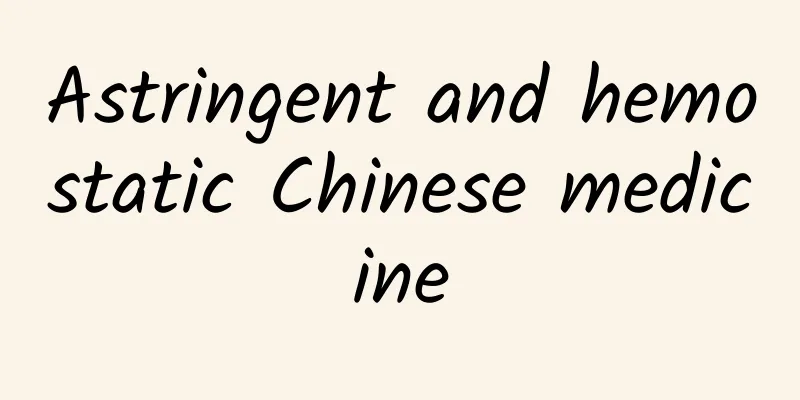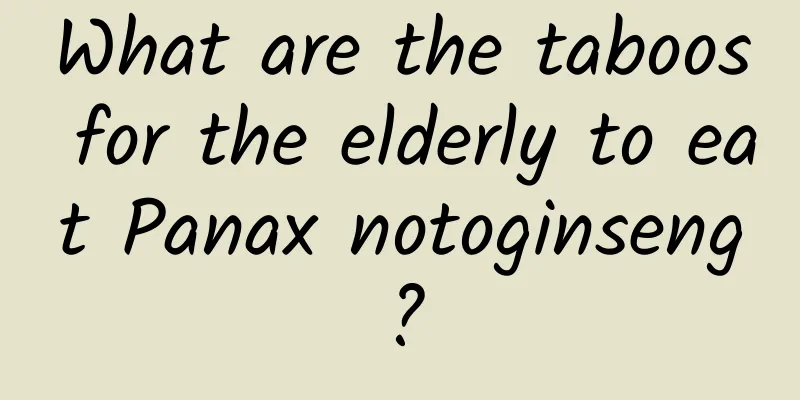Astringent and hemostatic Chinese medicine

|
Bleeding is often unavoidable. We may lose too much blood in our bodies due to trauma. Therefore, the most important factor in trauma is to stop bleeding first. There are many kinds of hemostatic Chinese medicines. The more common hemostatic and stasis-removing medicines in our lives are Panax notoginseng, Portulaca oleracea, and Taraxacum officinale, which can be found everywhere. So what are the astringent hemostatic Chinese medicines? What are the traditional Chinese medicines for astringency and hemostasis? Astringent and hemostatic drugs are mostly bitter in taste, cool in nature, and have the function of astringing and stopping bleeding. It can be used to treat various types of bleeding patients. Astringent hemostatic drugs have astringent properties, which may cause blood stasis and retention of pathogenic factors. They are better used on those with bleeding but no stasis. Those with blood stasis and pathogenic factors should be treated with caution. Astringent and hemostatic drugs include Bletilla striata, Bletilla striata, Callicarpa ovata, Sanguisorba officinalis charcoal, lotus root nodes, Loropetalum melongena, and hedgehog skin. 1. Bletilla Baiji, a traditional Chinese medicine, is the dried tuber of the orchid plant Baiji. It is dug up when the stems and leaves wither in September and October every year, the fibrous roots are removed, washed, boiled or steamed in boiling water until there is no white core, dried in the sun until half dry, the skin is removed, and dried in the sun. Astringent, hemostatic, anti-swelling and tissue regeneration. Used for hemoptysis, hematemesis, bleeding from trauma, sores, swelling and pus, and chapped skin. It should not be used together with Chuanwu, processed Chuanwu, Caowu, processed Caowu, and Fuzi. 2. Callicarpa Callicarpa ovata, also known as white begonia tree, bauhinia, callicarpa grass, and hemostatic grass, is a deciduous shrub of the Verbenaceae family and Callicarpa genus. The root or the whole plant is used as medicine, which can astringe and stop bleeding; clear away heat and detoxify. It is used to treat hematemesis, hemoptysis, epistaxis, blood in stool, hematuria, bleeding gums, metrorrhagia, purpura of the skin, bleeding due to trauma, carbuncle, swelling and infection, snake bites and burns. Used for epistaxis, hemoptysis, gastrointestinal bleeding, uterine bleeding, upper respiratory tract infection, tonsillitis, pneumonia, bronchitis; used externally to treat traumatic bleeding and burns. 3. Blood charcoal Xueyutan, a traditional Chinese medicine name, is a carbonized product made from human hair. Take the hair, remove impurities, wash off the oil and dirt with alkaline water, rinse with clean water, dry it in the sun, calcine it into charcoal, and let it cool. It has good hemostatic, blood stasis removing and diuretic effects. Effect: Used for hematemesis, hemoptysis, epistaxis, hematuria, bloody stool, metrorrhagia, traumatic bleeding, and difficulty urinating. 4. Lotus root festival Lotus root nodes are the connecting parts of lotus roots, which contain asparagine, tannins, etc. and have high medicinal value. The nature, taste and functions of lotus root nodes and lotus roots are similar, but lotus root nodes focus more on hemostatic effects. Traditional Chinese medicine believes that lotus root nodes are mild in nature, sweet and astringent in taste, and can be used as medicine to shorten bleeding time, stop bleeding and disperse blood stasis, and treat coughing up blood, vomiting blood, hematuria, bloody stool, uterine bleeding, etc. What are the traditional Chinese medicines for astringency and hemostasis? 5. Loropetalum Loropetalum is usually a shrub, rarely a small tree, and mostly grows in thickets in mountains and hills. The roots, leaves, flowers and fruits can all be used as medicine. The leaves are used to stop bleeding, and the roots and leaves are used for bruises and have the effect of removing blood stasis and promoting new blood. 6. Hedgehog skin Hedgehog skin, a Chinese medicine name, is the dried outer skin of the hedgehog, short hedgehog, or big-eared hedgehog of the Erinaceidae family. It has the effects of removing blood stasis and relieving pain, astringing and stopping bleeding, and consolidating essence. It is commonly used for epigastric pain, uterine bleeding, bloody stool, intestinal bleeding, rectal prolapse, hemorrhoids, spermatorrhea, and enuresis. Pregnant women should avoid taking this medicine. 7. Stop the blood flow Duanxueliu, a Chinese medicine name, is the dried above-ground part of the Lamiaceae plants Penguin herb or Pinellia ternata. Harvest before flowering in summer, remove mud and sand, and dry in the sun. Astringent and hemostatic. Used for metrorrhagia, hematuria, epistaxis, bleeding gums, and traumatic bleeding. For external use, apply appropriate amount, grind into powder and apply to the affected area. |
<<: Can motherwort stop bleeding?
>>: Common hemostatic herbs in the wild
Recommend
Can all calculations be performed using only a piece of white paper?
Although many people regard origami as an interes...
The efficacy and function of red grass
Red grass is one of the common traditional Chines...
The efficacy and function of bamboo shell
Modern medical research believes that bamboo shel...
How to take maca powder
Maca powder is made by grinding dry maca into pow...
The most inaccurate indicators measured by smart watches are actually these...
From heart rate, blood pressure, sleep to energy ...
An ancestral precept has governed the country for 600 years. This "pearl" in the vast forest of northern Fujian is creating an ecological miracle.
Wanmulin Nature Reserve in Jianou City, Fujian Pr...
How difficult is it for this robotic hand to pick up an egg?
It can crush a can when it needs strength, and it...
Can Cordyceps be eaten?
Cordyceps is the abbreviation of Cordyceps sinens...
Why do "singing gods" always appear in bathrooms? | Science Museum
Bathing is important to everyone. It’s something ...
The efficacy and function of the large-leaved star fern
The medical value of the giant walnut fern is bey...
In fact, everyone is "love-brained"?
Love is sweet and makes people yearn for it, but ...
Using "disposable shower cap" to cover dishes, is this kind of plastic wrap really usable?
In our home life, we use plastic wrap almost ever...
Big data reveals the top ten cities with the thickest snow in my country
China Weather Network News: There is no winter wi...
The efficacy and function of mango kernel
Traditional Chinese medicine is a Chinese traditi...
This generation of young people is using "hugging trees" to solve internal friction
Friends, have you ever heard of "tree huggin...









